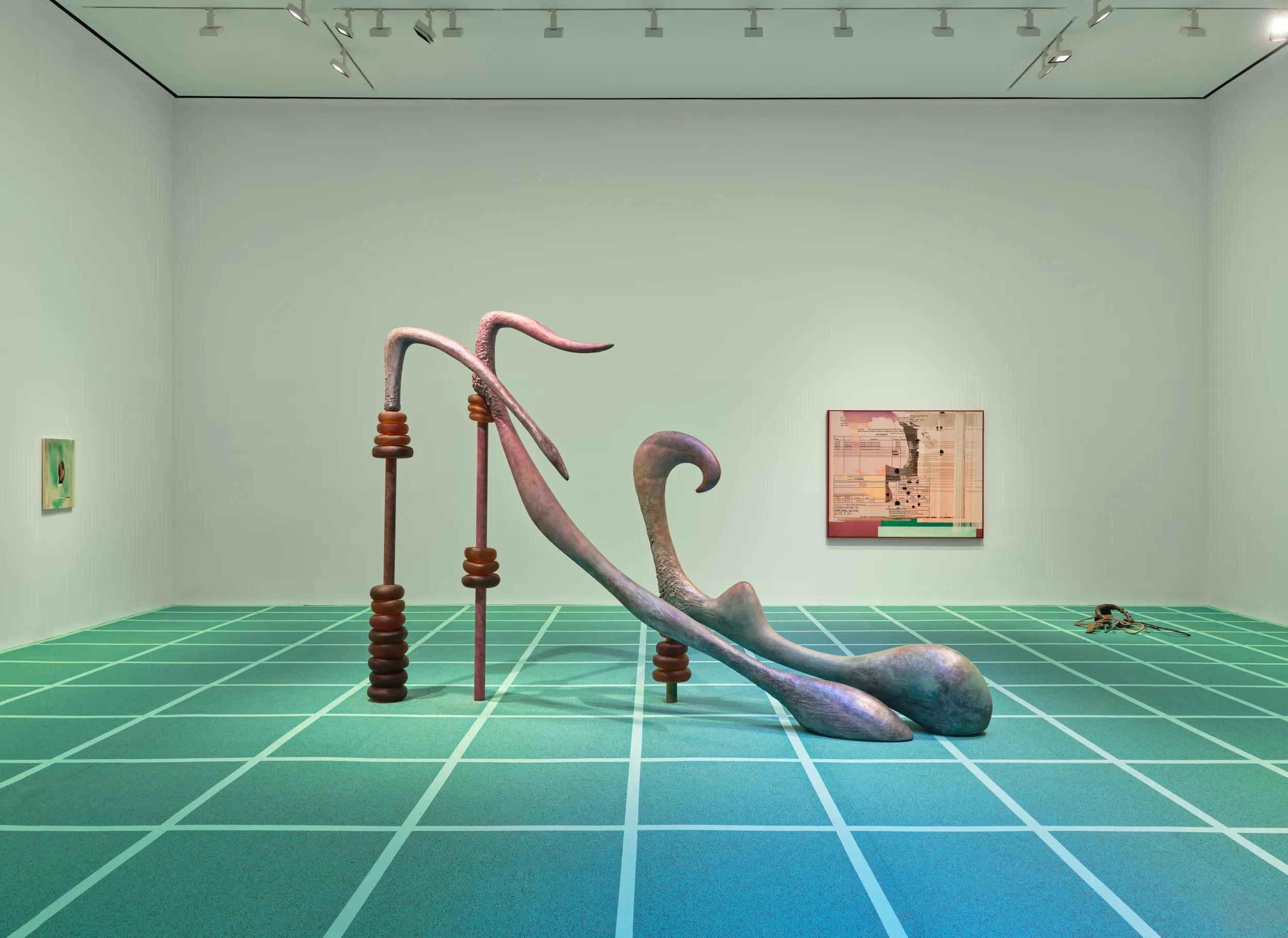
Berlinde De Bruyckere
13 June - 24 July 2010
Zürich
Horse, deer and man metamorphose in Berlinde De Bruyckere's exhibition for Hauser & Wirth Zürich. De Bruyckere's work deals with death and transfiguration and looks to stories and art of the past to address anxieties that remain current. Her sculptures accomplish an almost alchemical transformation of wax into flesh, and out of this fantastical realism she creates intolerably mutated bodies: figures lack heads, borrow and reconfigure anatomies, become amorphous, vegetal and abstract. Their distortions emphasise our own fragile existence. 'I want to show how helpless a body can be,' De Bruyckere has said. 'Which is nothing you have to be afraid of — it can be something beautiful.'
Antlers, a new motif for the Flemish artist, summon the fate of Actæon who was turned into a stag by the Goddess Diana before swiftly being torn to death by his own hounds. Preternaturally delicate and raw, pairs of antlers are suspended by string from the gallery walls. Blood red, mottled white and sinuous, they are utterly unlike the clichéd hunting trophies mounted in baronial halls. Flowing downwards and growing together as though protecting one another, these pairs seem sensitive and still alive; one wears bandages — an intimation of human feeling lying within these abstract animal forms.
Two other pieces in the exhibition use the same technique: a horse, sliced in two lengthways and hung vertically in a vitrine; and an elongated human figure whose resting body twists into a fleshy landscape that admits no head. The latter is dignified despite its deformity and has been granted a pillow to cushion its legs. Its emaciated form calls to mind Renaissance depictions of Christ taken from the cross, as well as more contemporary horrors such as concentration camp victims or the distorted bodies of famine sufferers. The horse imagines death on a large scale. Headless and hoofless, pale and translucent, its vertical carcasses are anthropomorphic, resembling swollen human figures whilst also calling to mind Rembrandt's 'Flayed Ox' and Soutine’s ox torsos.
Another horse's torn body, cast in iron, rises dramatically from a table. Iron is a new material for De Bruyckere and was chosen to convey 'the heaviness of death'. The horse's unyielding weight and emptied body contrast brutally with the malleable vulnerability of the waxen forms. Bringing unlike things together, De Bruyckere tests sculpture’s potential to recuperate and heal, using materials and motifs to create an increasingly complex language of empathy and suffering.
Selected images

Romeu, 2010
2010
Installation views











1 / 4
About the Artist

Berlinde De Bruyckere
Working with casts made of wax, animal skins, hair, textiles, metal and wood, Berlinde De Bruyckere renders haunting distortions of organic forms. The vulnerability and fragility of man, the suffering body—both human and animal—and the overwhelming power of nature are some of the core motifs of De Bruyckere’s oeuvre.
Born in Ghent, Belgium in 1964, where she currently lives and works, De Bruyckere is profoundly influenced by traditions of the Flemish Renaissance. Drawing from the legacies of the European Old Masters and Christian iconography, as well as mythology and cultural lore, De Bruyckere layers existing histories with new narratives suggested by current events to create a psychological terrain of pathos, tenderness and unease. The dualities of love and suffering, danger and protection, life and death and the human need for understanding are the universal themes De Bruyckere has been dealing with since the beginning of her career. ‘I want to show how helpless a body can be,’ De Bruyckere has said. ‘Which is nothing you have to be afraid of—it can be something beautiful.’
Current Exhibitions
1 / 12





















